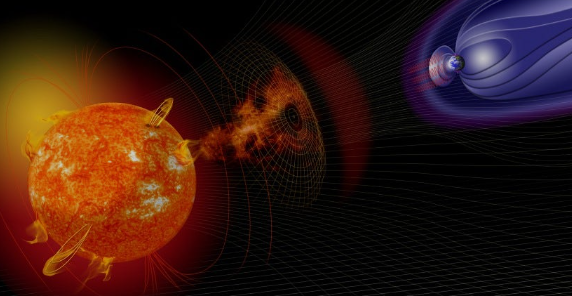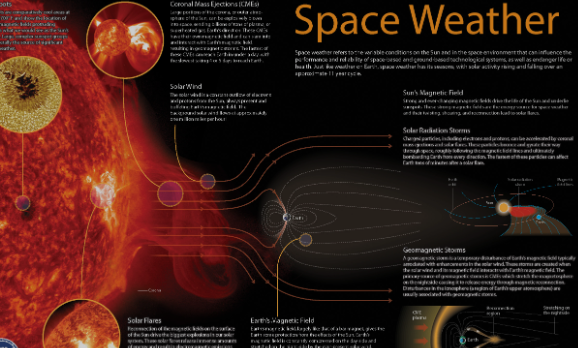NASA Advisory: Possible Minor G1-class geomagnetic storms late on November 25th through 26th.
Recent days have seen increased solar activity, with a rise in sunspots and regular coronal mass ejections (CMEs).Earth is presently affected by solar storms, and NASA highlights the potential for another event today. The space agency suggests that one of these CMEs might be on a trajectory for a collision with Earth.
Should a CME impact Earth, it has the potential to instigate a geomagnetic storm, characterized by disturbances in the Earth’s magnetic field and atmosphere caused by solar plasma.

Huw Morgan, the head of the Solar Physics group at Aberystwyth University in the UK, clarified to Newsweek, “When a substantial plasma storm erupts from the sun, and that storm carries a magnetic field oriented in the opposite direction to Earth’s magnetic field, we have a ‘perfect storm,’ leading to a larger geomagnetic storm.”
Meanwhile, Spaceweather.com has highlighted the potential for minor G1-class geomagnetic storms late on November 25th through 26th. This aligns with the transit of two Coronal Mass Ejections (CMEs) grazing Earth’s magnetic field. Both CMEs were propelled into space by magnetic filaments erupting from the sun earlier in the week.

Daniel Brown, an associate professor in astronomy and science communication at Nottingham Trent University in the UK, elucidated to Newsweek, “Solar flares and CMEs both stem from the sun, as its magnetic field undergoes twisting and stress due to motions within the sun.”
Coronal Mass Ejections (CMEs) entail significant expulsions of plasma and magnetic fields from the Sun’s corona. These occurrences can release vast amounts of coronal material, carrying an embedded magnetic field more robust than the background solar wind interplanetary magnetic field (IMF) strength. CMEs traverse outward from the Sun at speeds ranging from slower than 250 kilometers per second (km/s) to nearly 3000 km/s.

During such events, a geomagnetic storm arises from disruptions to Earth’s magnetic field due to solar emissions. Solar storms are categorized on a scale from G1 to G5, with G1 storms being the mildest and happening regularly, multiple times each month.

Although a G1 geomagnetic storm is not anticipated to endanger life on Earth, it can still exert an impact on power grids and affect specific satellite functionalities, including those vital for GPS systems and mobile devices.
